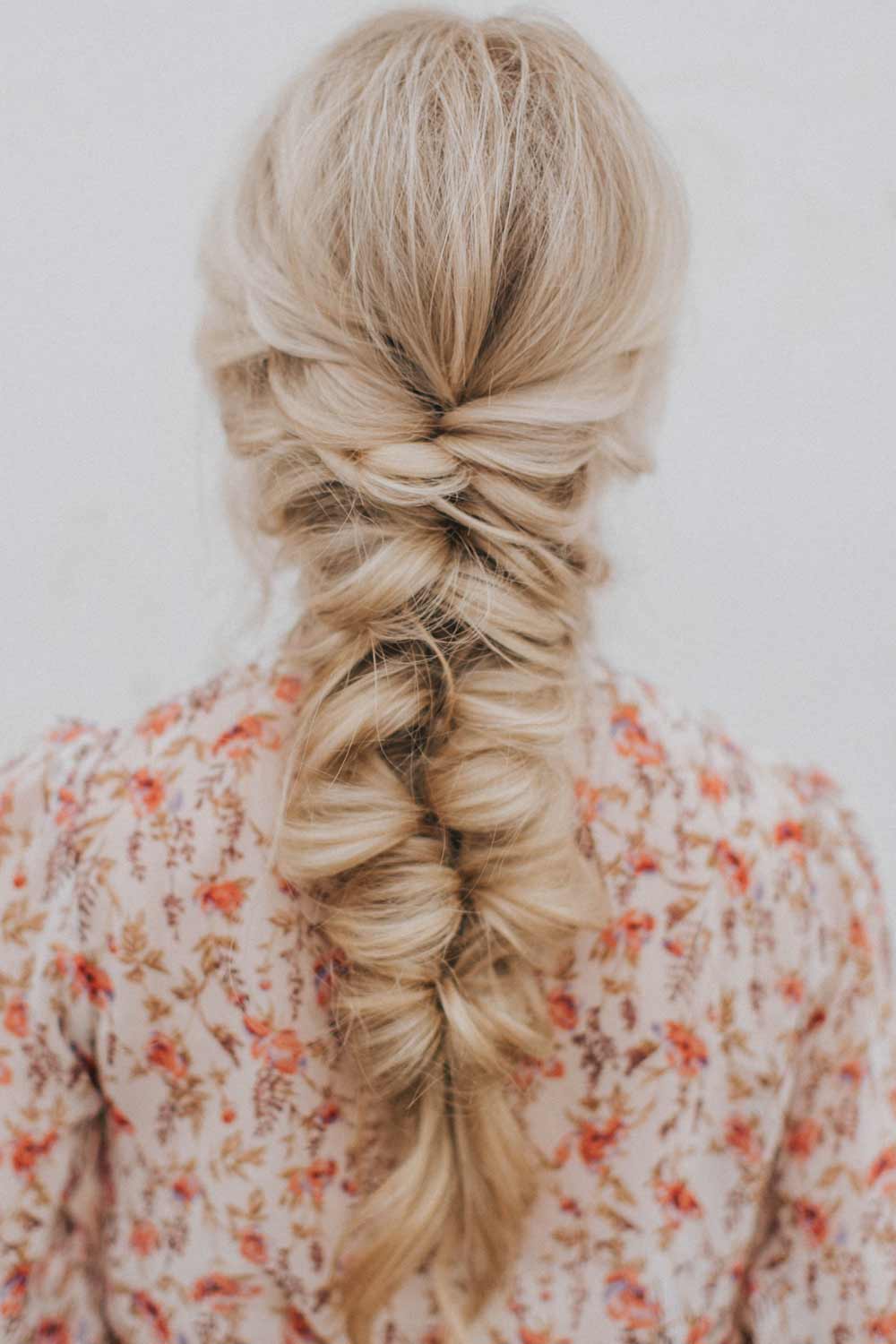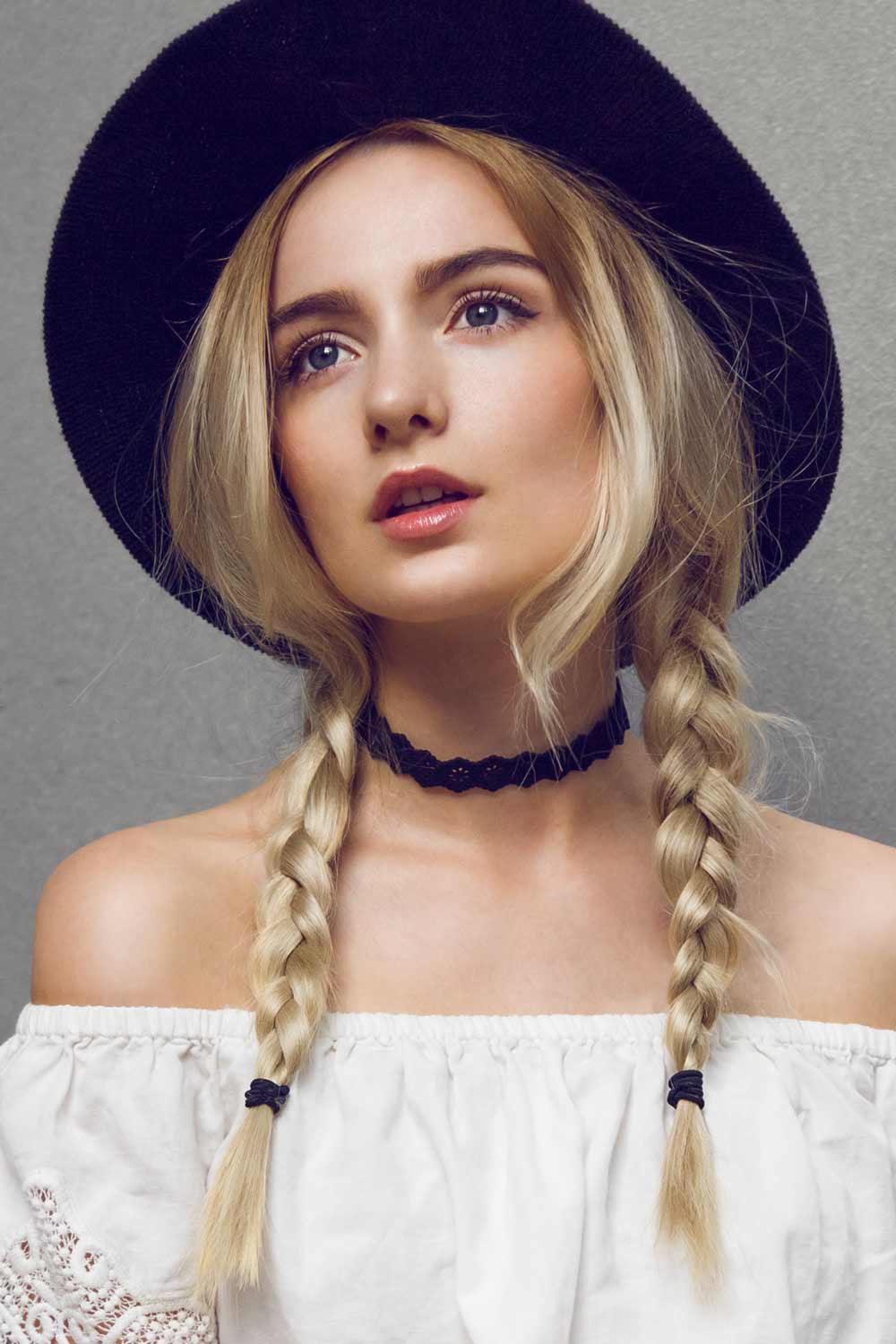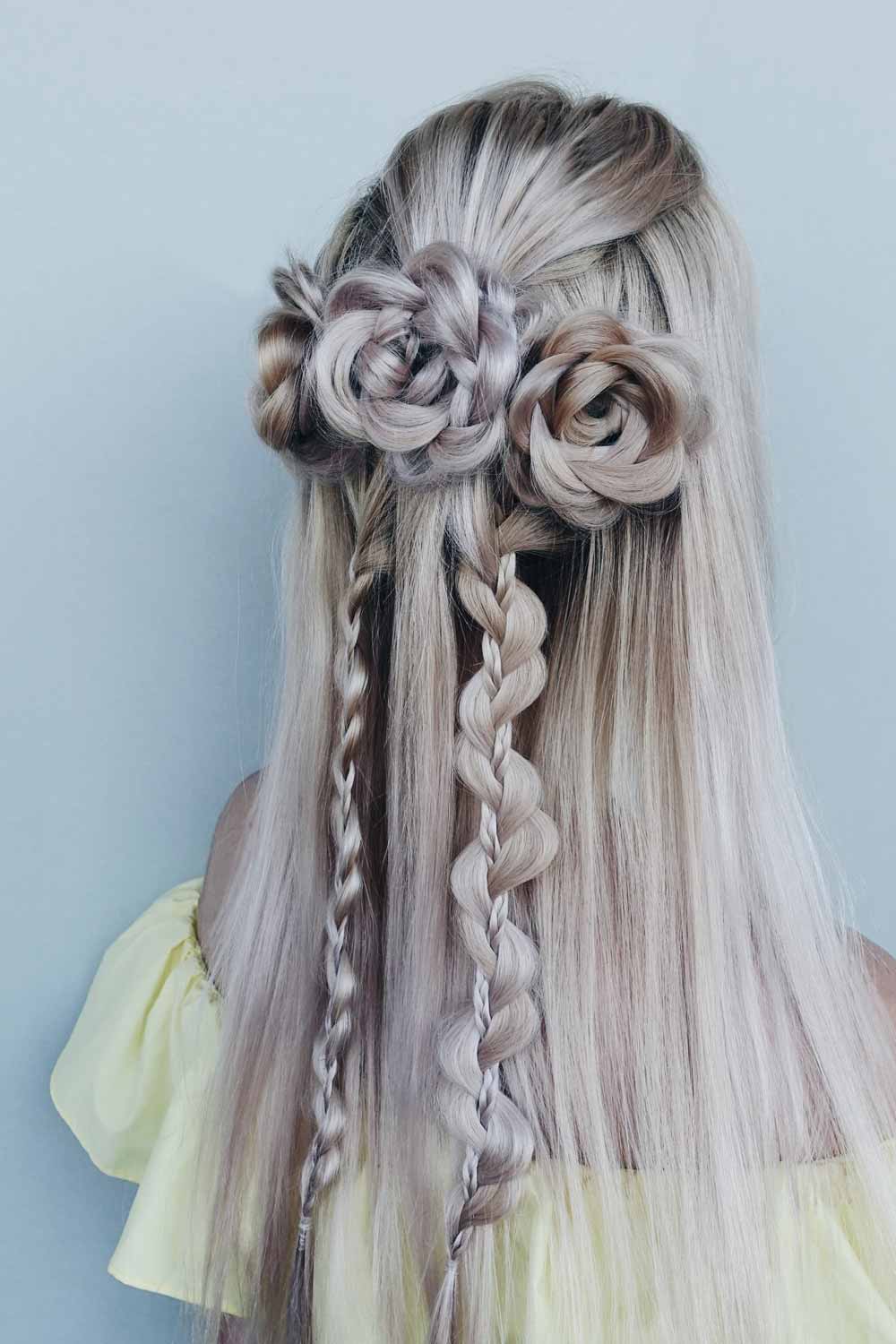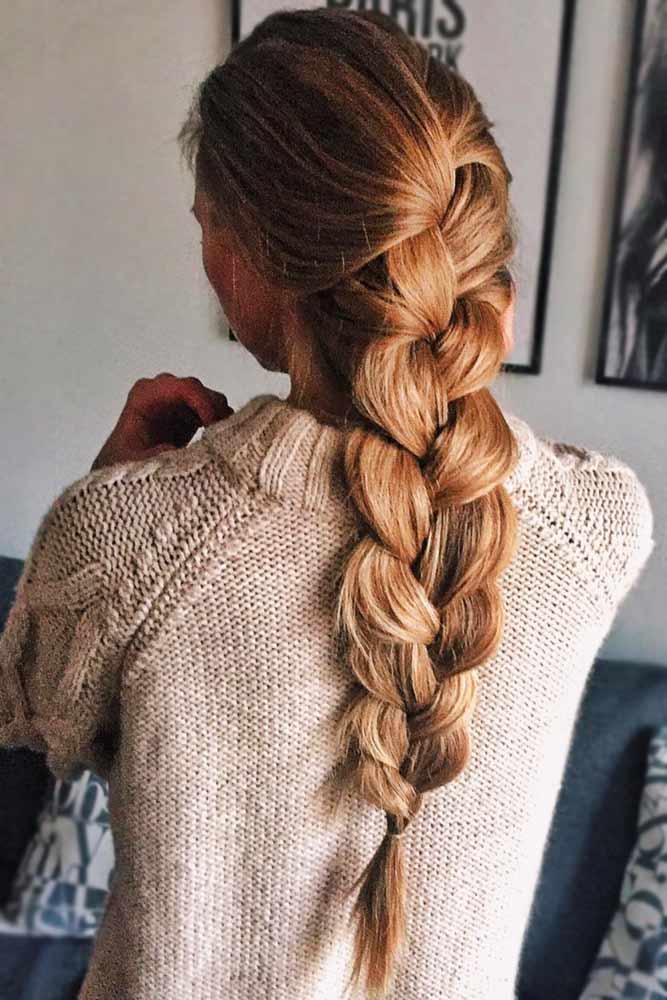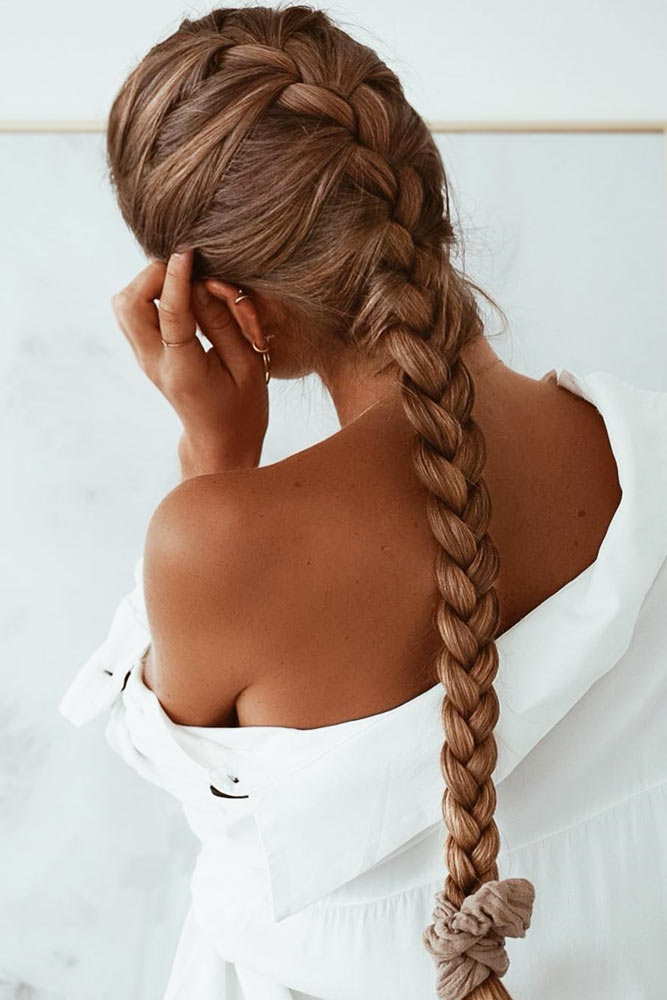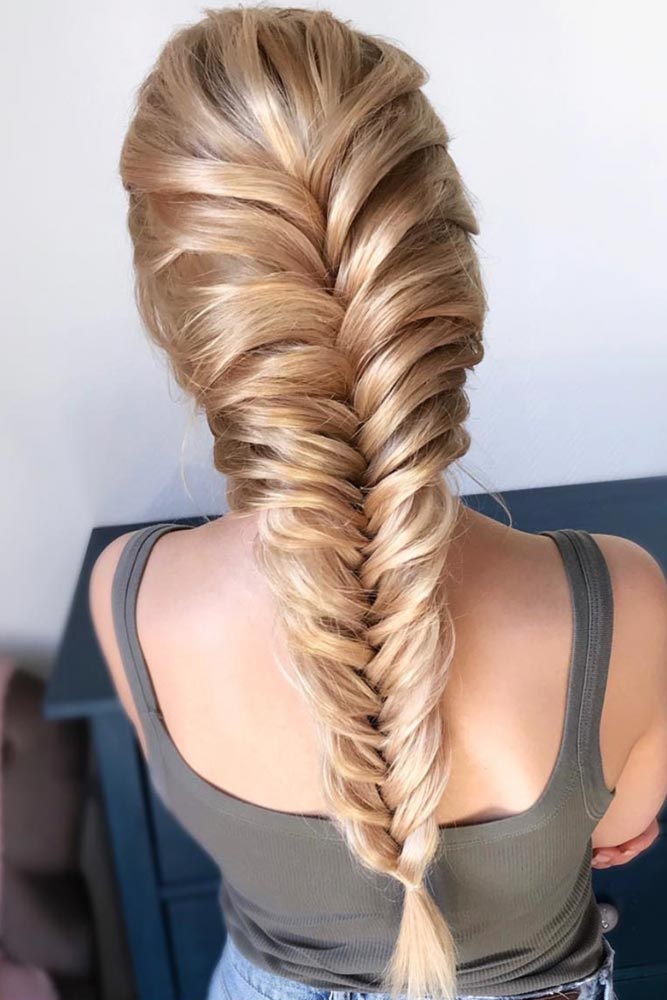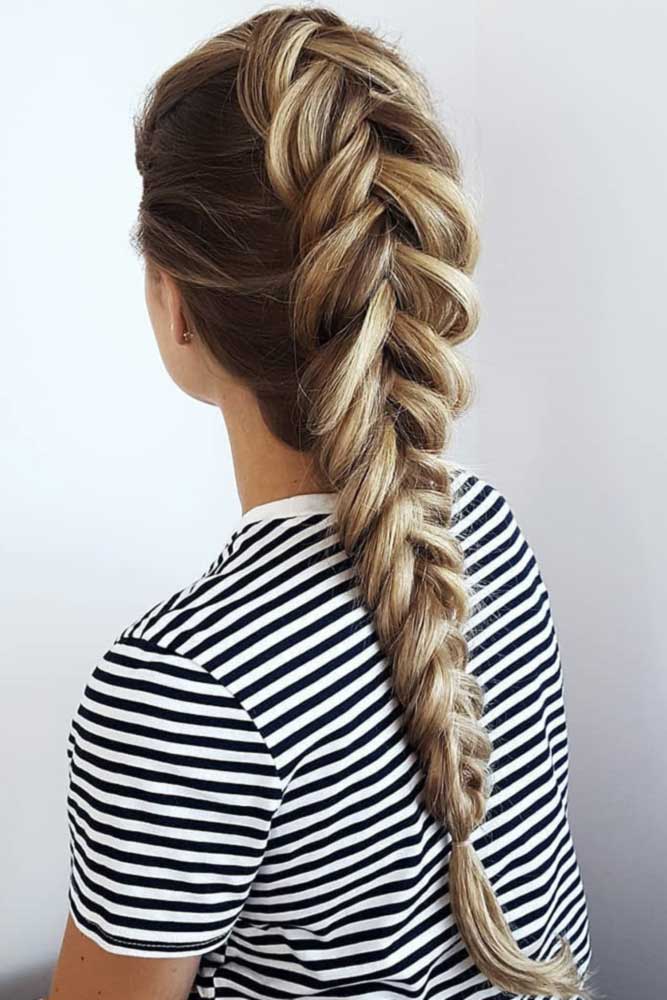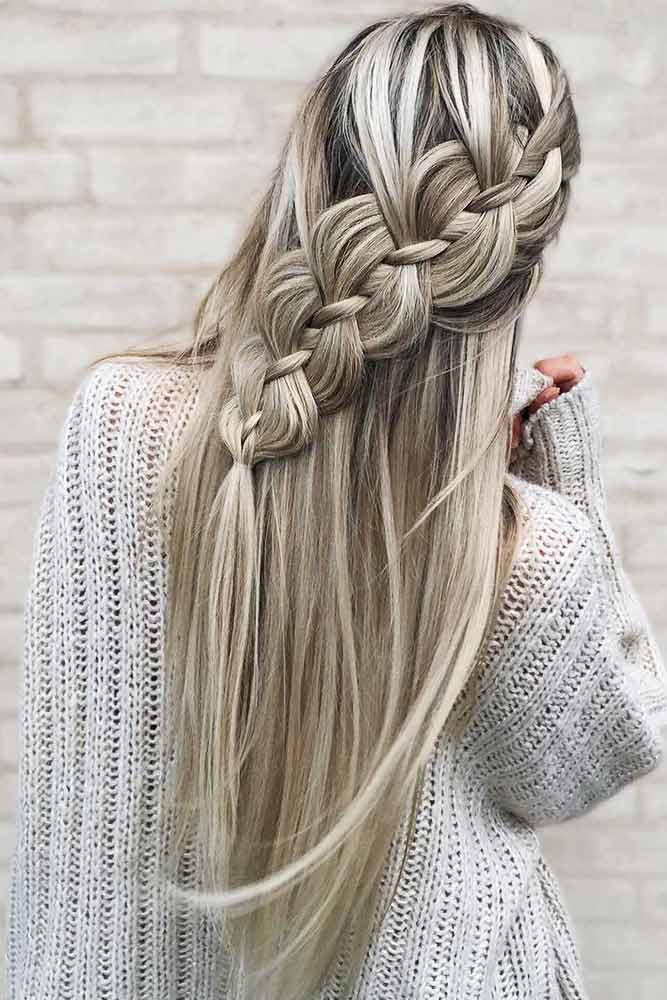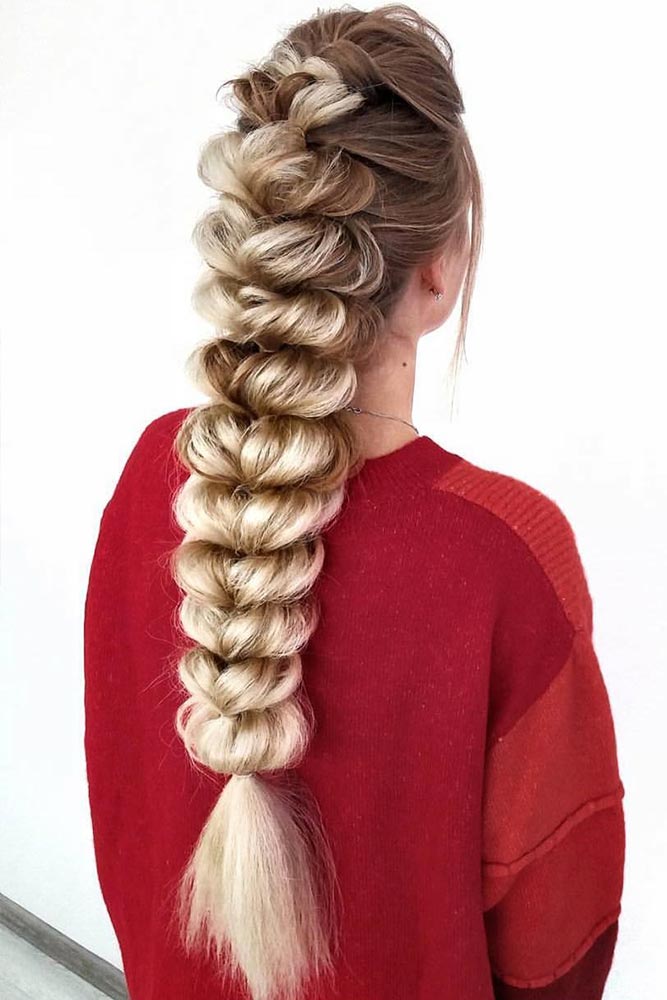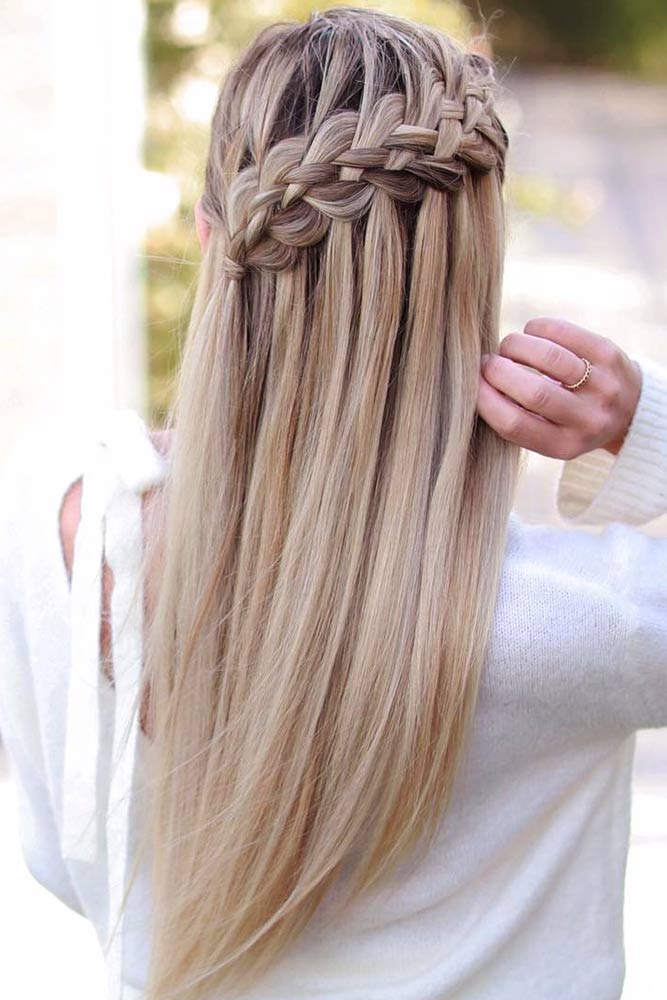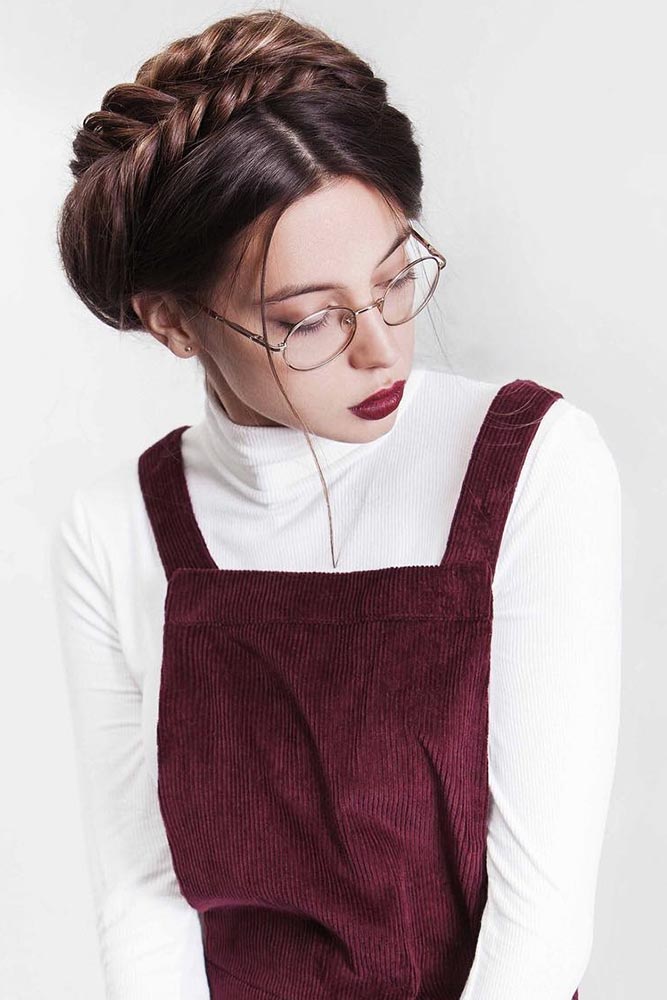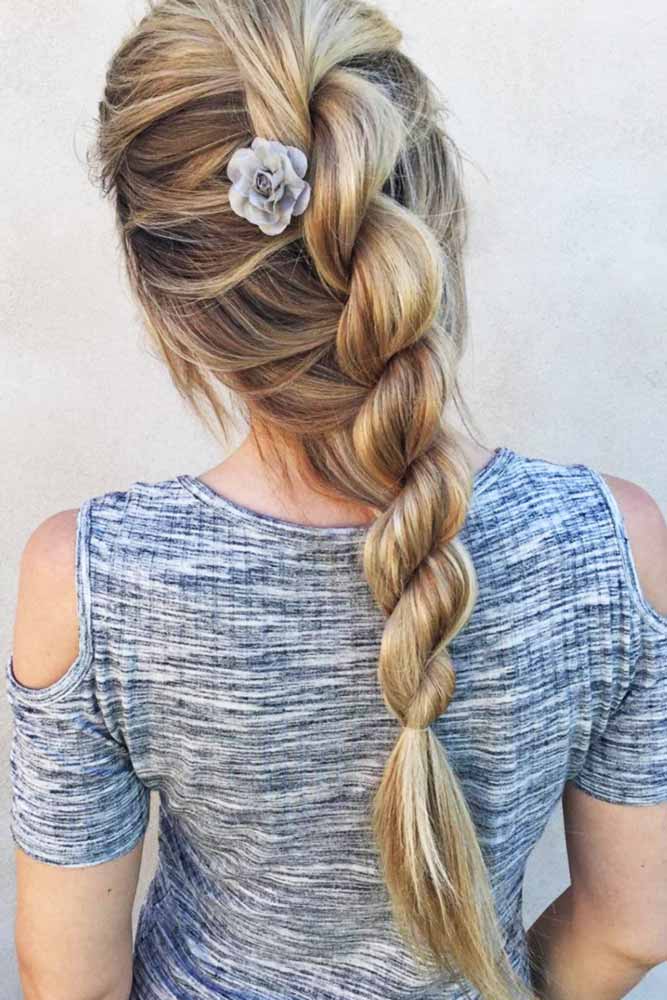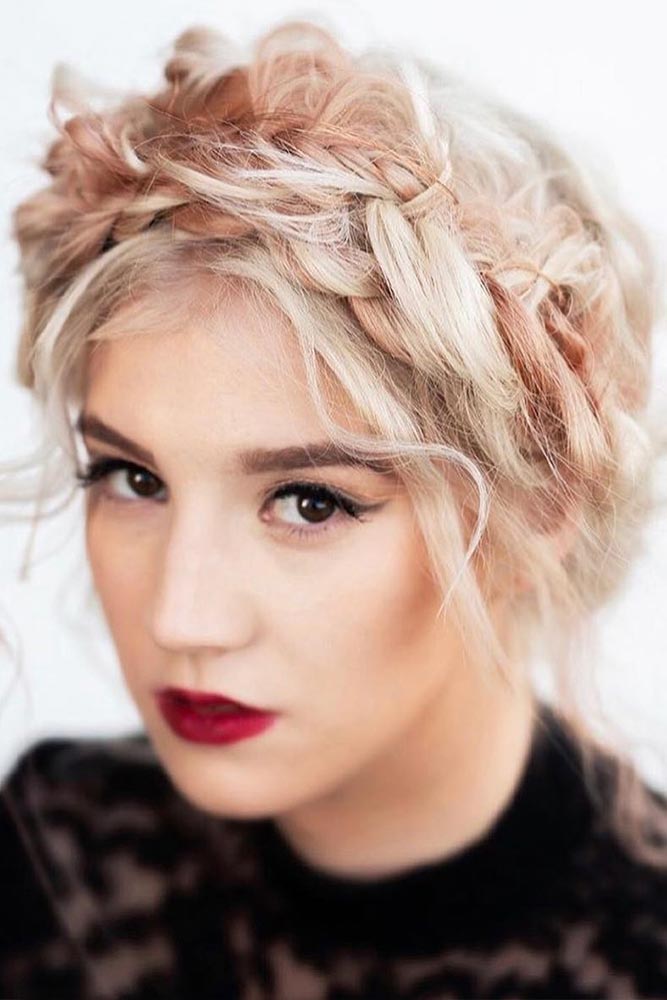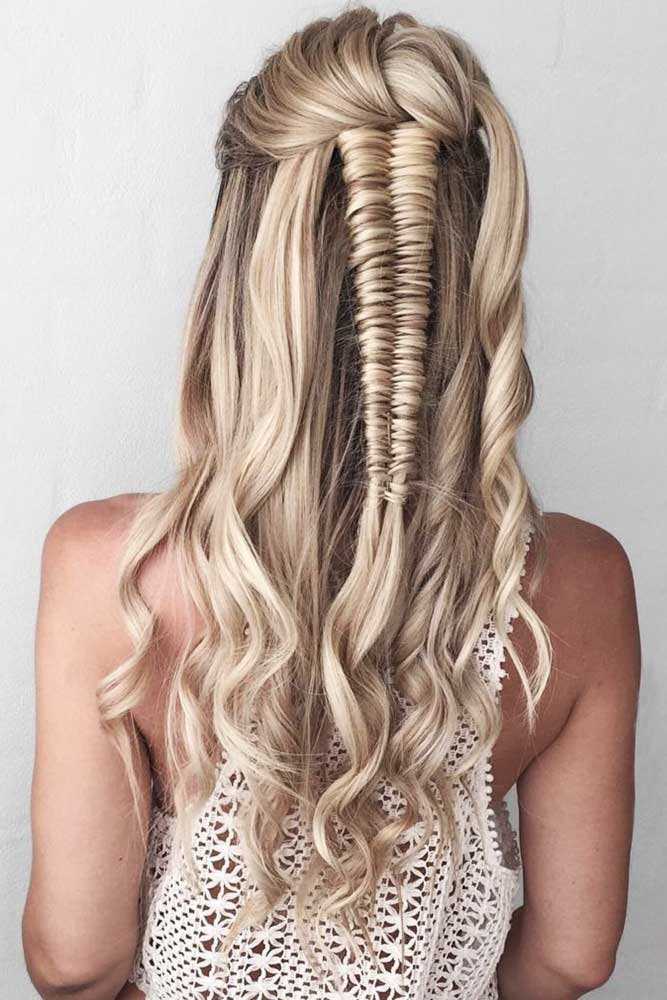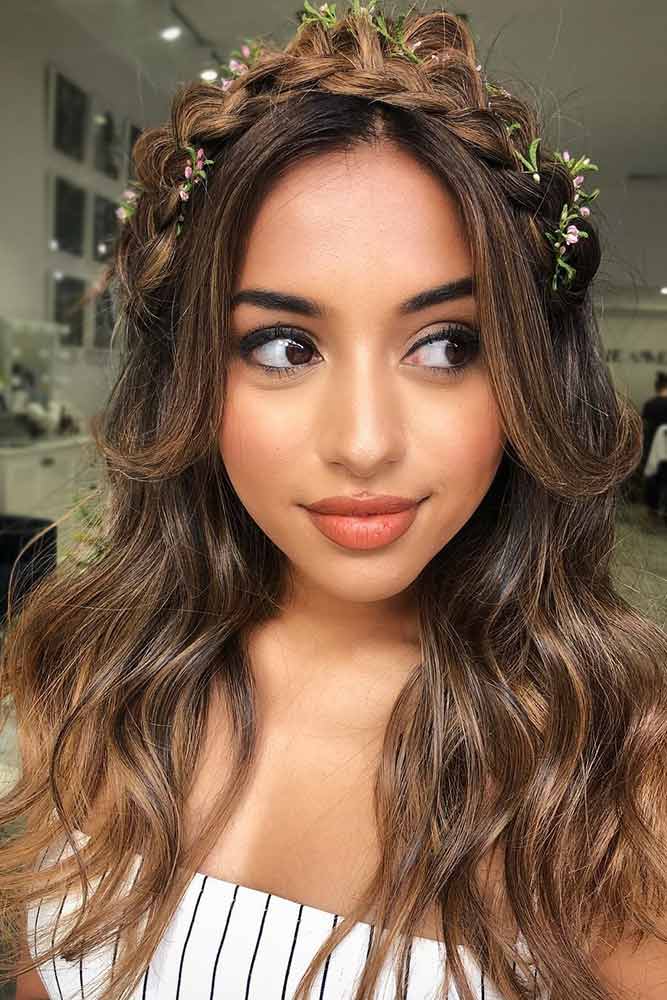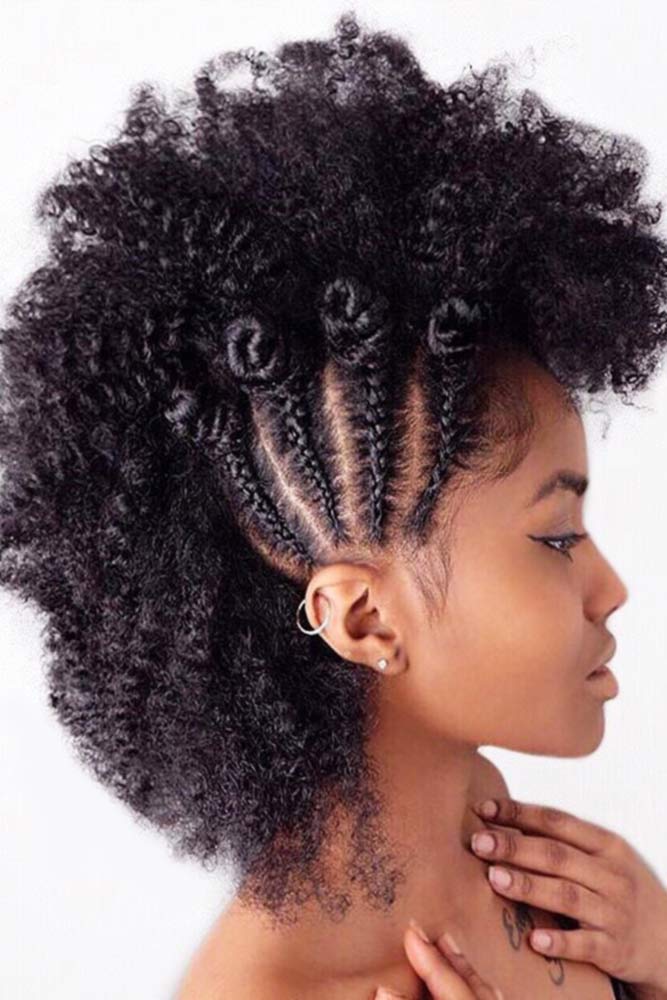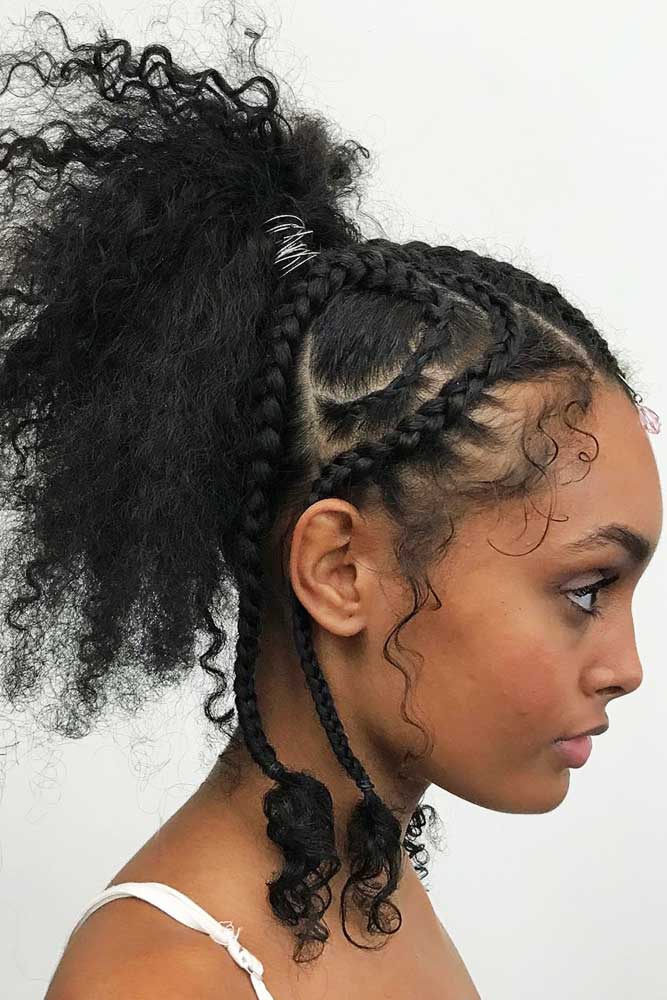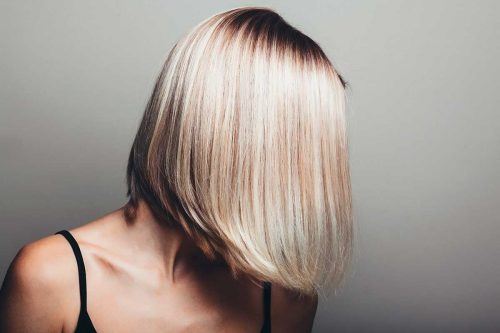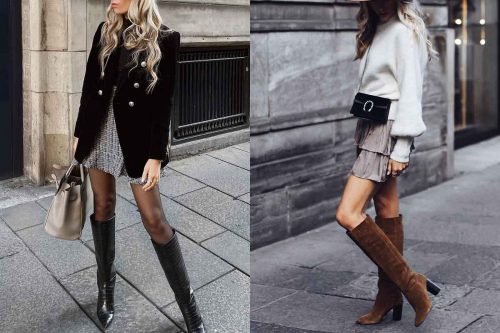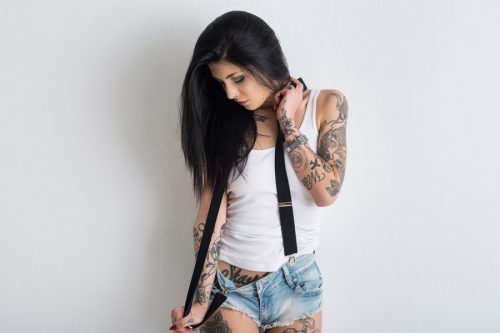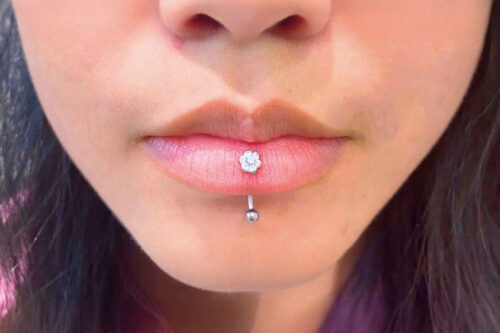How many types of braids do you know? Several decades ago, this question wouldn’t be as tricky as today. But now, the good-old regular, three-strand plait that we used to wear to school every single day has split into a great variety of different braided hairstyles. And that’s good news for ladies who like to experiment, as today there is a style for every mood and occasion.
Braids are something ageless, something that women from all over the world will never stop loving. So how about you to see how differently you can wear the classics? It’s time to diversify your styling routine! Let our braided ideas inspire you.
- The History and Origin of Braids
- Simple Three-Strand Braid
- French Braid
- Fishtail Braid
- Dutch Braid
- Four Strand Braid
- Pull Through Braid
- Waterfall Braid
- Milkmaid Braids
- Rope Twisted Braid
- Halo Braid
- Infinity Braid
- Headband Braid
- Cornrow Braids
- Micro Braids
- Five Strand Braid
- Box Braids
- FAQ: Types Of Braids
The History and Origin of Braids
Source: ShutterstockModern fashion presents a massive variety of braiding styles you can introduce into your everyday look, but have you ever wondered where they all come from? A simple answer is – no one truly knows. The first braids have been dated as far back as 25 thousand years. However, a few historical facts may shed a little extra light on the origins of classy braiding.
We should start with Austria since the Venus of Willendorf is claimed to be the first statue that wore braided hair. According to archeological data, the statue is as old as 25K years.
Going back to the Stone Age, it is safe to note that old paintings of the Tassili Plateau of Sahara, Africa showcase the first cornrows. Some scholars believe that these paintings are as old as 5.5K years. Archeologists from France and Russia claim that people who lived there used to braid their hair since the Bronze Age.
Source: ShutterstockMost Northern European countries such as the Netherlands, Ireland, Germany, and England, whose ancestors were preserved in peat bogs, showcase braided hair examples around 2.5K years old. Not to mention the braided Viking fashion. Most Viking men braided the tops of their heads while sporting reversed mullets, and their women wore loose locks decorated with braids while being maidens and featured complex braided styles after they got married.
The Oriental culture has many braided instances too. For example, in Japan during the Middle Ages, women have to braid their locks atop their heads. They were expected to do so not to overweigh their heads with thoughts and worries, which were men's prerogative. Moreover, it was believed that the spirits of loved and lost ones could be trapped in their hair. Often, women cut their braids off and left them in temples to worship their dead ones. Should you happen to visit the Higashi Hongan-Ji Temple in Kyoto, you will find a large braid compiled of thousands of left braids forming a single strand.
Source: ShutterstockIn Hindu culture, there was a tradition of wearing their hair long and braided so that the ancestors could communicate with the living better.
Let's not forget about the cultural value of braids that Native Americans carry. People with longer manes were believed to have the strongest connection with the supernatural. They gave their children their first and only haircut during the special ceremony and grew the hair out ever since.
As you can see, every culture has its own relationship with braided hair, but one thing remains in common – there are different styles to discover and introduce into your every day. That is what we will discuss with you today in detail.
Simple Three-Strand Braid
Source: Instagram.com/olgasarokaOne of the classiest braid styles for women would be the three-strand braid. Surely, it may have been the first hairstyle you mastered as a kid. The process of three-strand braid creation is as simple as it can get. All you have to do is follow these simple steps:
- Take your favorite brush and detangle your hair well.
- Split your hair into three equal sections.
- Cover the middle section with the left strand first.
- Repeat the process with the right section.
- Continue the process until you reach almost the end of your hair.
- Secure the end with a hair tie.
French Braid
Source: Instagram.com/ameliecheval31The French Braid is usually described as one of the more complicated braid hairstyles for women. Despite such a definition, it is yet another classy variant that you can master in a matter of a few pieces of training. Use these tips to guide you in the correct direction:
- Brush your hair well.
- Section the top part of your hair on a temple level.
- Divide the section into three.
- Start a regular braid, flipping the left section of the middle and repeating the same with the right strand.
- Once the core of the French braid is formed, start adding small sections of hair from each side of your head as you continue down to the nape of your neck.
- As you reach the nape of your neck and run out of hair on the sides, finish the style as a classy three-strand braid.
- Secure the tip with a hair tie.
- You can tug on the sides of the braids to add some volume to the look.
Fishtail Braid
Source: Instagram.com/hair_veraAs you continue mastering different braid styles, you will discover that some are more formal and complex than the rest. If you are getting ready for a grand occasion in your life but don't want to spend hours at the salon, the fishtail braid will save the day. This is how you achieve the look:
- Start with brushing your mane well.
- Secure a low pony with a hair tie at the nape of your neck.
- Divide the pony into two equal parts.
- Section a small strand of hair on the outer side of the left part and flip it inside and add it to the right part.
- Repeat the steps with the right part.
- Continue doing so until you reach the end of the braid.
- Secure the end with a hair tie.
- You may want to cut off the top elastic hair tie to soften the look.
Dutch Braid
Source: Instagram.com/emichali_When it comes to different braids, Dutch and French braids are like mirror reflections of one another. Usually, the Dutch Braid is referred to as a reverse French braid. Here's what you have to do to succeed with the look:
- Brush and detangle your hair well.
- Section the top part of your hair on a temple level.
- Divide the section into three equal parts.
- Start braiding your hair by flipping the left strand under the middle.
- Repeat the same with the right strand.
- Start adding hair from the sides of your head as you continue down with the braid.
- Make sure that each new strand goes under the middle of the braid.
- Once you reach the nape of your neck, finish the braid as a three-stand variant.
- Secure the end with a hair tie.
Four Strand Braid
Source: Instagram.com/n.starckNo matter how many braids styles for women are known, we often seek something new and unique to implement into our styles. A four-strand braid may become your simple and innovative style to master. Yet, there is a fair share of calculation to do before you learn how to braid your hair in such a way.
- Start with brushing your hair properly.
- Divide your hair into two.
- Then split each section into two, so you have four strands at hand.
- Enumerate the strands, giving them numbers from 1 to 4 in direct order.
- Now, take section 1 and pull in under strand 2 and over stand 3.
- Take strand 4 and pull in under strand 3 and over strand 2.
- Renumber the stands from the beginning in a 1, 2, 3, 4 order and repeat the braiding session.
- Keep renumbering until you reach the end of your hair.
- Secure your hair with a hair tie.
Pull Through Braid
Source: Instagram.com/christina_halanShould you be interested in those braid types designed to bring additional volume to your style, a pull-through braid may be your best bet. Some sources name the braid an inside-out one, and there is a grain of truth to the description. Here's how you can pull the look off:
- Start by brushing your locks well.
- Now, gather a few elastic bands and keep them within reach.
- Section some hair at the top of your head and secure it with an elastic band into a pony.
- Create a second pony right under the first one.
- Divide the first pony into two equal parts and pull the second pony up in between those parts.
- Temporarily secure the second pony up.
- Add a section from the left and right of your head to the first pony and secure the bunch with another hair elastic.
- Take the second pony and divide it in two.
- Repeat the pull-through process with the second and third pony.
- Keep creating new sections as you move down the length.
- When you reach the end, secure your braid with a hair tie.
- Tug on the sides of the braid to introduce some more volume if necessary.
Waterfall Braid
Source: Instagram.com/n.starckThe waterfall braid style is a mere masterpiece everyone would like to look at. Despite its fancy appeal, the style is easy to succeed with if you have the right guidance at hand. Follow these pieces of advice to complete the look flawlessly:
- Brush and detangle your hair well.
- Place a few bobby pins within your grasp.
- Part your hair in the middle, or go for a side part – whichever suits your goal.
- Take a section of your hair on one side of the parting and divide it into three.
- Start off braiding a regular three-stand braid.
- Name the strands – top, middle, and bottom.
- As the bottom strand switches places with the top one, leave it be and pick another strand of hair right next to it. Flip the new strand over the middle and cover the middle with another "bottom" strand.
- Every time the bottom strand gets to the other side, you must leave it hanging to create the "waterfall" effect.
- When you reach the back of your head, add a few "regular braid" stitches and secure the ends with an elastic band.
- You can finish the look with a side waterfall or braid the other side to complete the circle.
Milkmaid Braids
Source: Instagram.com/thebraidsfactoryWho would’ve thought that easy braids could be that gorgeous? The truth is, getting milkmaid braids takes less than 5 minutes, and their simplicity is the thing that makes the look so pule and feminine. To get the style, you just need to combine two braids and pin them on the top. Even the simplest braids can project utterly gorgeous vibes and the milkmaid braid style proves the point. It will take 5-10 minutes to finish the look, but the result will help you embrace and emphasize your gentle appeal like nothing else.
- Gather a few braiding supplies to succeed with the look twice as effectively: a brush, a rat-tail comb, bobby pins, and hair ties.
- Brush your mane well to get rid of knots and tangles.
- Use a rat-tail comb to divide your hair into two equal sections in the middle.
- Braid each side using a three-strand method.
- Secure each braid with a hair tie.
- Pull on each braid's sides to add more volume to them.
- Use the rat-tail comb or your fingers to pull out a few strands to frame your face in the front.
- Take one braid and put it across the crown of your head, and secure it with bobby pins.
- Repeat the step with the other braid.
- Add some bobby pins, if needed, throughout the length of your braids.
- Hide the ends of each braid under the other to make them look neater.
Rope Twisted Braid
Source: Instagram.com/n.starckLeading an active lifestyle has its perks and downsides. Sometimes you feel like you are running late, but you must still look as presentable and stylish as possible. That is where a rope twist braid comes to save the day. Here's how you do the braiding:
- Brush your locks well.
- Secure the hair on the top of your head in a high ponytail.
- Secure the pony with a hair tie.
- Divide the pony into two equal sections.
- Twist each section in a clockwise direction.
- Combine the two twisted sections in one, twisting them in an anticlockwise direction.
- Secure the ends with a hair elastic.
- Ready to go!
Halo Braid
Source: Instagram.com/theconfessionsofahairstylistA halo braid symbolizes sophistication and elegance when it comes to braided hairstyles. Besides, you can always combine more than one type of braid with this style. We will help you master a killer combo of a halo and a French braid. Take these steps to achieve the look:
- Brush your hair and part it with a side part.
- Start braiding one side the way you would a regular French braid.
- Keep on braiding as you go around your head and reach the nape of your neck.
- Braid down the plait and secure it with a hair tie.
- Repeat the steps on the other side of your head.
- Crisscross the plaits and tuck their ends under one another to hide them.
- Pin the braids with a few bobby pins for the style to hold in place.
Infinity Braid
Source: Instagram.com/n.starckIt may sound like a strange name for a braid with a beginning and an end, but we suggest that the title Infinity refers to the never-ending beauty and charm of the style. Despite its complicated design, the braid is simple and easy to deal with. Here's what you have to do to replicate the look:
- Detangle your hair properly.
- Gather all the hair in the back and divide it into two equal sections.
- Take a small strand of hair on the right of the section and place it over one right part and under the left one.
- Don't let go of the stand but pair it with a small section of hair on the left.
- Take the combined stands over the left part and under the right part of the braid.
- Repeat the process over and over until you reach the end of the desired outcome.
- Keep in mind that you can use the braiding style as a self-sufficient hairdo or combine it with other styles and 'dos to make them more intricate and unique.
Headband Braid
Source: Instagram.com/natalieannehairWhen it comes to braids, women have been wearing them as the best accessories since the dawn of time. Besides, a well-chosen braided style will keep the hair out of your face and spice up the elegant vibe you aim to project. A headband braid is an effortless style everyone will find useful at one time or another. Here's how you can do it:
- Brush your hair to remove knots and tangles.
- Comb your hair back.
- Take a mid-size section of hair next to your left ear.
- Create a classy three-strand braid.
- Secure it with a hair tie at the end.
- Tug on the braid's sides to add more volume to it.
- Wrap the braid around your forehead so that it touches your right ear.
- Secure the braid on the top of your head with a few bobby pins.
- Ready to roll!
Cornrow Braids
Source: Instagram.com/braids_in_actionLadies with natural hair know how to nail-wearing braids! Although there are no specific types of braids for black hair, and everyone can pull off cornrows, it just so happens that this technique is popular among the natural hair community. Just look what a magnificent design these little side cornrows create! All it takes is a few steps to end up with a gorgeous outcome:
- Brush your hair back and get rid of knots and tangles.
- Decide how many cornrows you are willing to create.
- Section the first part of your hair, and create an even parting from the top to the bottom of your mane.
- Secure the loose part of your mane, so it does not get in the way.
- Section the central part of the hair into three.
- Create the first stitch.
- Add a small section of hair on the right to start a new stitch.
- Finish the stitch with a small portion of hair added from the left.
- Continue braiding down as you introduce small portions of hair to the row.
- Secure the row with a hair tie.
- Proceed with a new row.
- Carry on until you cover your head in cornrows completely.
Micro Braids
Source: Instagram.com/theconfessionsofahairstylistMicro braids are the smaller and thinner version of cornrows. African American women usually go for them when they want to spice up their chevelure with a braided design. The braids take some time to finish, but you can wear them for a couple of weeks straight.
- Brush your mane through.
- Section the bottom part of your hair and secure the loose upper section with a clip.
- Divide the bottom part into smaller but equal sections and start braiding them all the way down.
- Secure each micro braid with a hair elastic.
- When you are through with the bottom section, carry on with another row.
- After you reach the top, you can add braids so that a visible middle part is created, or you can locate them randomly.
Five Strand Braid
Source: Instagram.com/n.starckIf you think you are already familiar with all the types of hair braids, a five-strand style is there to surprise you. You may have already guessed that the style is quite intricate and exquisite, but that does not mean you can't master it with ease. Use these tips to your advantage:
- Detangle your locks well.
- Divide your hair into five equal sections.
- Number them 1, 2, 3, 4, 5.
- Take the number 1 strand and bring it under the 2 and over the 3.
- Take the number 5 strand and bring it under the 4 and over the 3.
- Remunerate the strands and repeat the process.
- Continue braiding until you run out of hair or reach the desired length.
- Secure the ends with a hair tie.
Box Braids
Source: Instagram.com/samirasjewelryOf all the types of braids for black women, box braids take one of the most sought-after positions. Yet, this protective hairstyle can be sported by anyone who shares a passion for it. It must be noted that you can make the braids stand out with the help of different extensions, kanekalons, and such.
- Start by brushing your locks well.
- Divide your mane into four equal parts, and secure each with a clip.
- Split the first part into equal box-shaped sections.
- Start braiding the section from the top down. You can add extensions upon creating the first stitches.
- Braid each section within the first part and continue to another.
- Repeat the steps until you run out of loose hair.
- Enjoy the outcome for the next few weeks!
You’ve just got to know so many different types of braids. Which one matches your mood? Now you know how many awesome things you can do with your hair and how unique you can sport them. Isn’t that time for experiments?
FAQ: Types Of Braids
What are the different types of African braids?
- Goddess Braids.
- Fulani Braids.
- Knotless Braids.
- Faux Locs.
- Cornrows.
- Senegalese Twists.
- Twists.
- Crochet braids.
What is the most common braid?
A flat, stable, three-stranded hair construction is the simplest and most frequent type of braid. To create a wider range of structures, more complicated patterns can be built from any number of strands, such as five-stranded braids, fishtail braids, rope braids, French or waterfall braids.
Which braids last the longest?
Thiner braids can last around 3 months, which is the longest duration between salon visits.
Was this article helpful?




